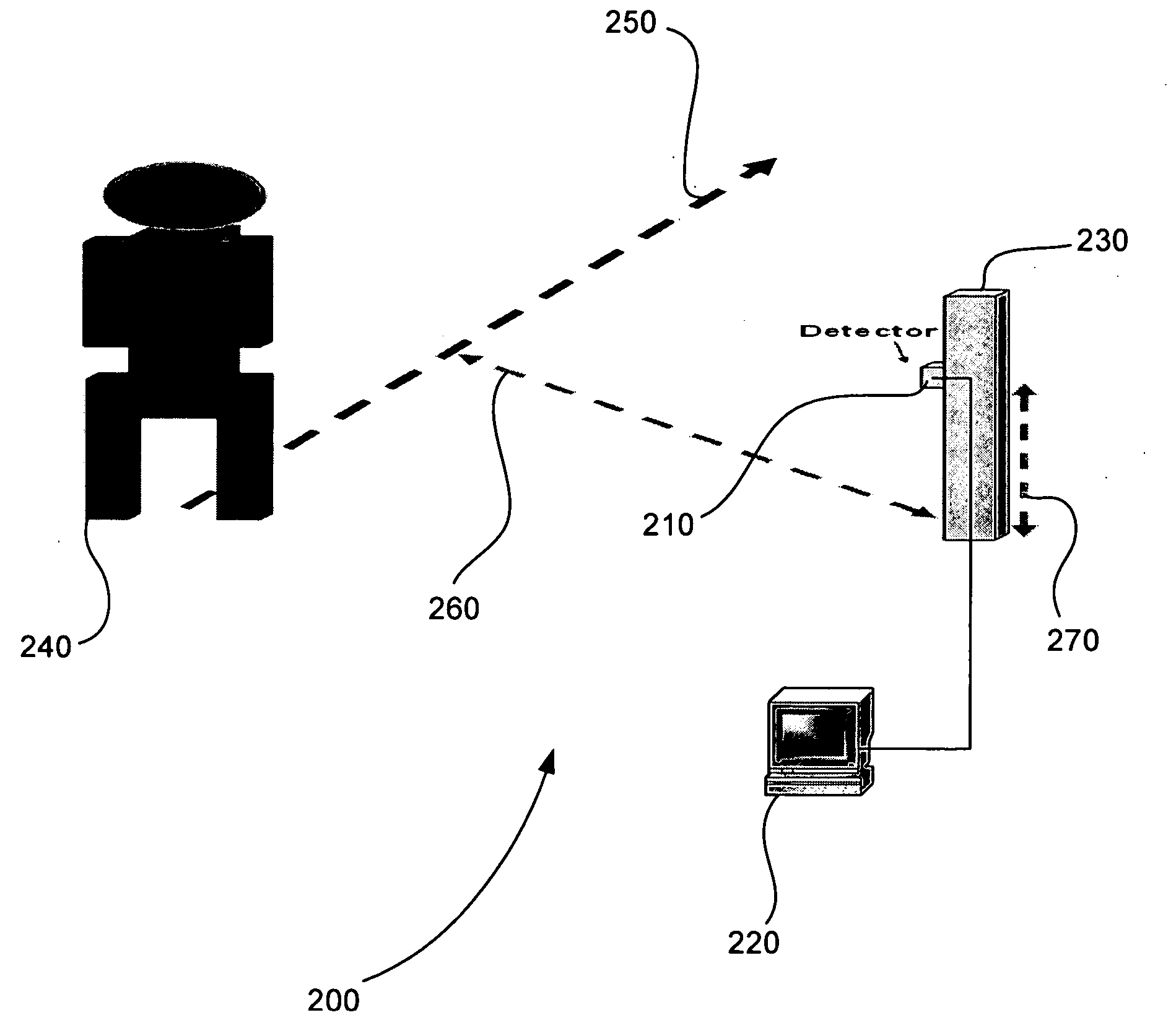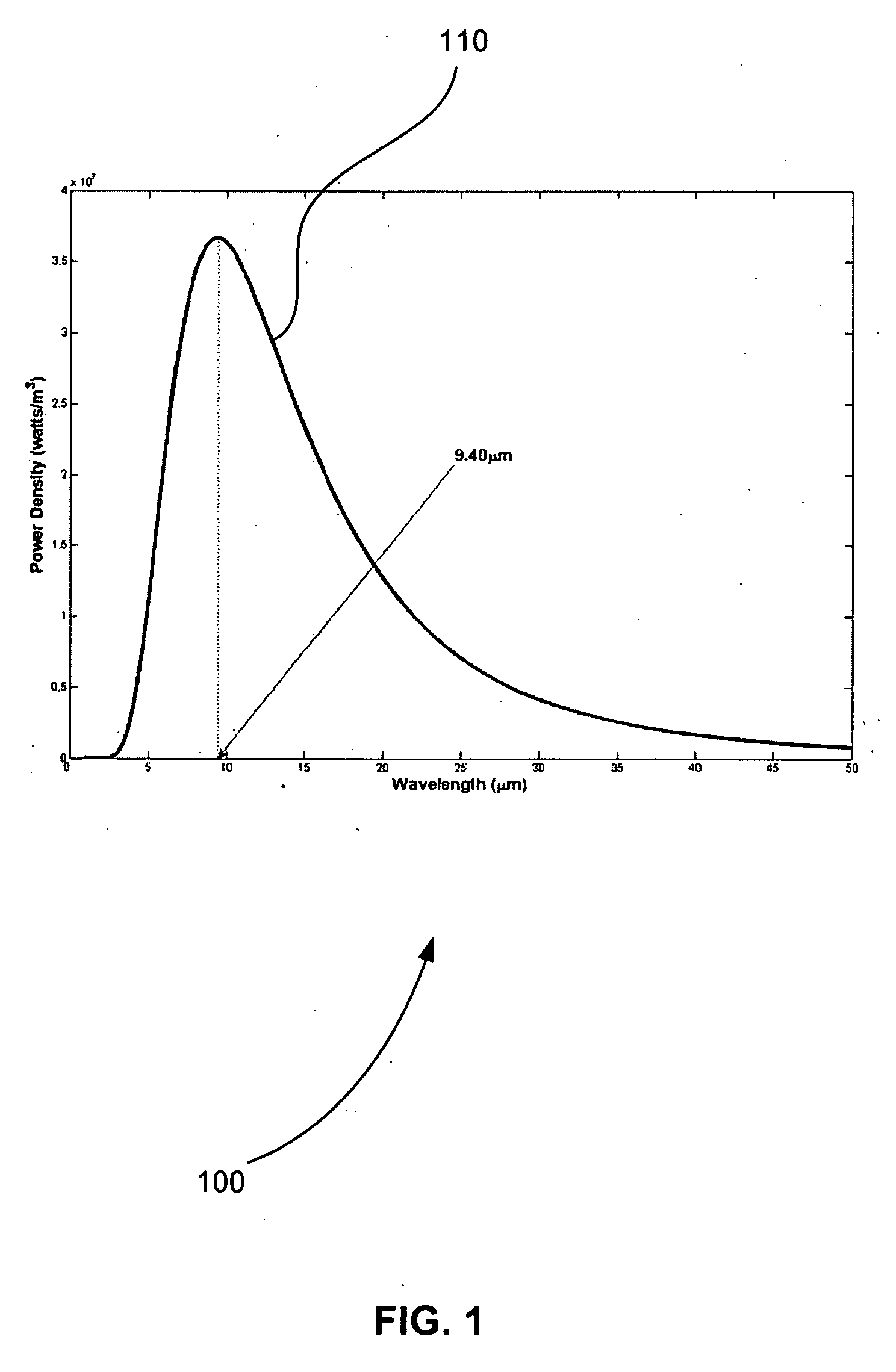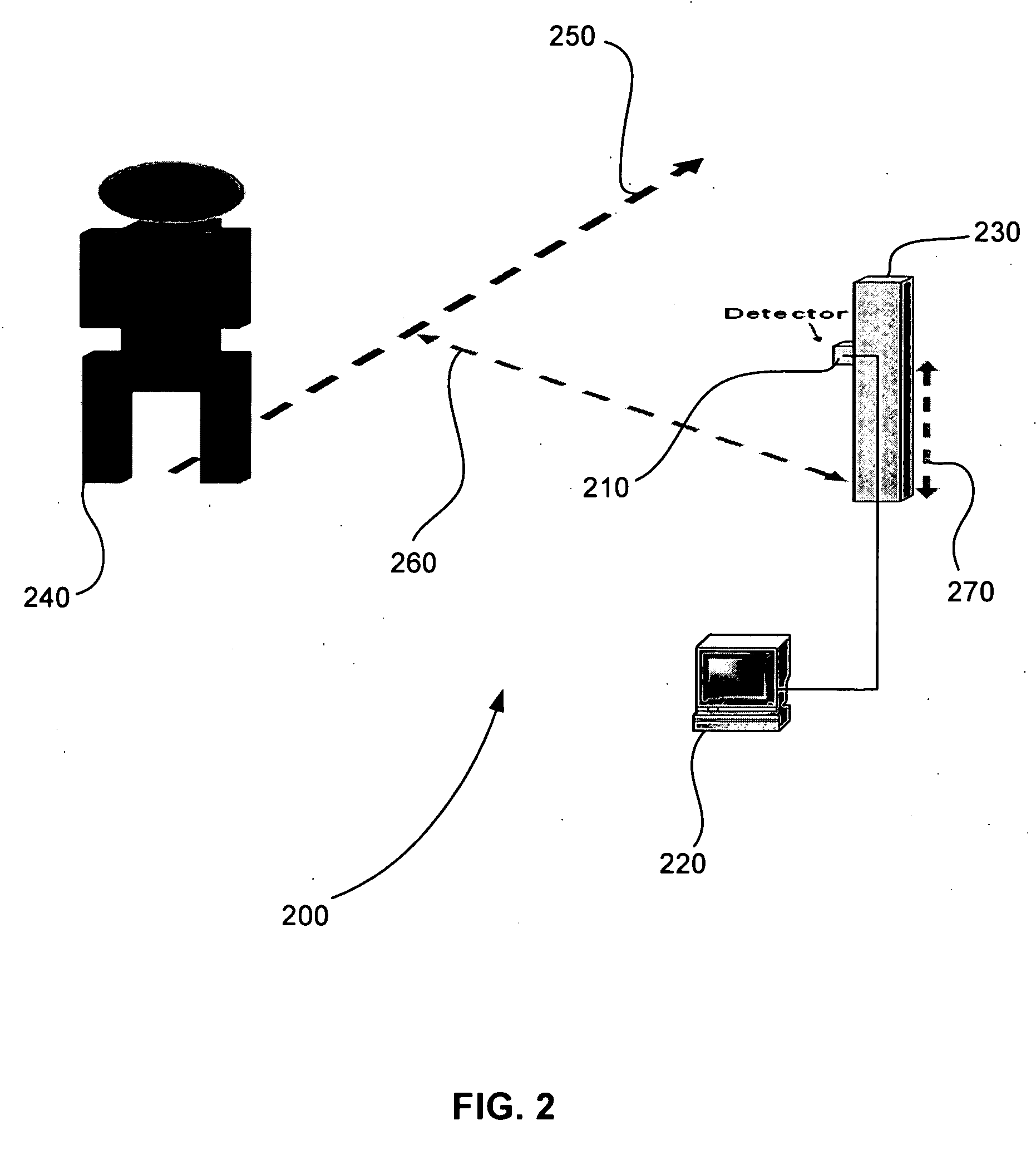Sensor system for identifiying and tracking movements of multiple sources
- Summary
- Abstract
- Description
- Claims
- Application Information
AI Technical Summary
Benefits of technology
Problems solved by technology
Method used
Image
Examples
Embodiment Construction
[0028] The present invention is based upon the radiation characteristics of an object, such as a person, animal, or vehicle. The temperature of a typical human body is about 37 degrees C. or 98 degrees F. There is a constant heat exchange between the body and the environment due to the difference in their temperatures. The radiation characteristics of any object can be analyzed using the black-body radiation curve governed by Planck's Law.
[0029]FIG. 1 is an exemplary plot 100 of a black-body radiation curve 110 of a human body at 37 degrees Celsius, in accordance with an embodiment of the present invention. In FIG. 1, it can be seen that essentially all of the radiation is in the infrared region, with the peak radiation occurring at 9.55 μm. To estimate human body radiation of heat to its environment, Planck's Law is integrated over the transmission window of a sensor. The average human body radiates about 100 W / m2 of power. Thus, infrared detectors that are sensitive in a range of...
PUM
 Login to View More
Login to View More Abstract
Description
Claims
Application Information
 Login to View More
Login to View More - R&D
- Intellectual Property
- Life Sciences
- Materials
- Tech Scout
- Unparalleled Data Quality
- Higher Quality Content
- 60% Fewer Hallucinations
Browse by: Latest US Patents, China's latest patents, Technical Efficacy Thesaurus, Application Domain, Technology Topic, Popular Technical Reports.
© 2025 PatSnap. All rights reserved.Legal|Privacy policy|Modern Slavery Act Transparency Statement|Sitemap|About US| Contact US: help@patsnap.com



